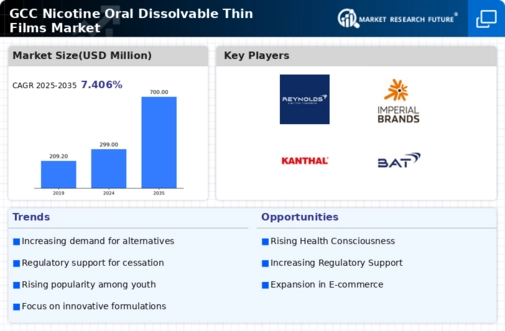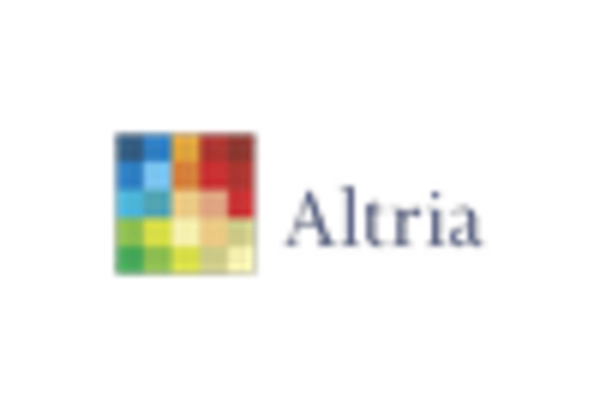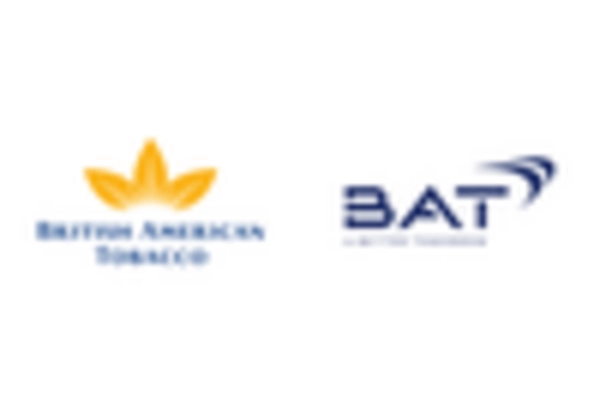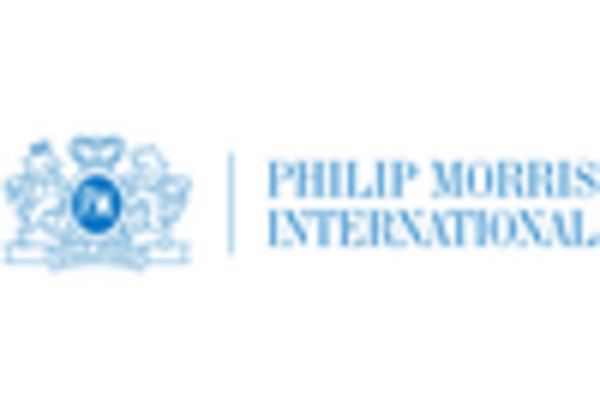Increasing Demand for Smoking Alternatives
The nicotine oral-dissolvable-thin-films market is experiencing a notable surge in demand as consumers increasingly seek alternatives to traditional smoking methods. This shift is largely driven by a growing awareness of the health risks associated with smoking. In the GCC region, the market for nicotine replacement therapies is projected to grow at a CAGR of approximately 8% from 2025 to 2030. As more individuals look for discreet and convenient options to manage their nicotine cravings, the appeal of oral-dissolvable films is likely to expand. This trend suggests that manufacturers may need to innovate continuously to meet evolving consumer preferences, thereby enhancing their market presence.
Rising Disposable Income and Consumer Spending
The nicotine oral-dissolvable-thin-films market is poised for growth. Rising disposable incomes in the GCC region enable consumers to spend more on premium products. As economic conditions improve, individuals are increasingly willing to invest in health-conscious alternatives to smoking. This trend is particularly evident among urban populations, where lifestyle changes are more pronounced. Market analysts suggest that the increase in disposable income could lead to a 5% rise in sales of nicotine oral-dissolvable films over the next few years. Consequently, manufacturers may need to tailor their marketing strategies to appeal to this demographic, emphasizing quality and health benefits.
Growing Awareness of Smoking Cessation Programs
The nicotine oral-dissolvable-thin-films market benefits from a growing focus on smoking cessation programs across the GCC. Governments and health organizations are actively promoting initiatives aimed at reducing smoking rates, which in turn raises awareness about alternative nicotine delivery methods. The integration of oral-dissolvable films into these programs is becoming more common, as they offer a user-friendly option for individuals looking to quit smoking. This trend is expected to contribute to a market growth of approximately 6% annually, as more smokers are encouraged to explore these alternatives. The alignment of public health goals with product availability may enhance the overall market landscape.
Regulatory Changes Favoring Innovative Products
The nicotine oral-dissolvable-thin-films market is likely to benefit from evolving regulatory frameworks that support innovative nicotine delivery systems. In the GCC, authorities are increasingly recognizing the potential of harm reduction strategies, which may lead to more favorable regulations for products like oral-dissolvable films. This shift could facilitate easier market entry for new players and encourage existing companies to expand their product lines. As regulations become more accommodating, the market could see an influx of new products, potentially increasing market size by 10% over the next five years. This regulatory environment may also foster greater consumer trust in these alternatives.
Technological Advancements in Product Development
Technological innovations play a crucial role in the nicotine oral-dissolvable-thin-films market, enabling the development of more effective and appealing products. Recent advancements in formulation techniques have led to improved bioavailability and faster absorption rates, which are critical factors for consumer satisfaction. In the GCC, the introduction of flavors and enhanced delivery mechanisms has attracted a broader audience, particularly among younger demographics. The market is expected to witness a growth rate of around 7% annually as companies invest in research and development to refine their offerings. This focus on technology not only enhances product efficacy but also positions brands competitively in a rapidly evolving landscape.

















Leave a Comment